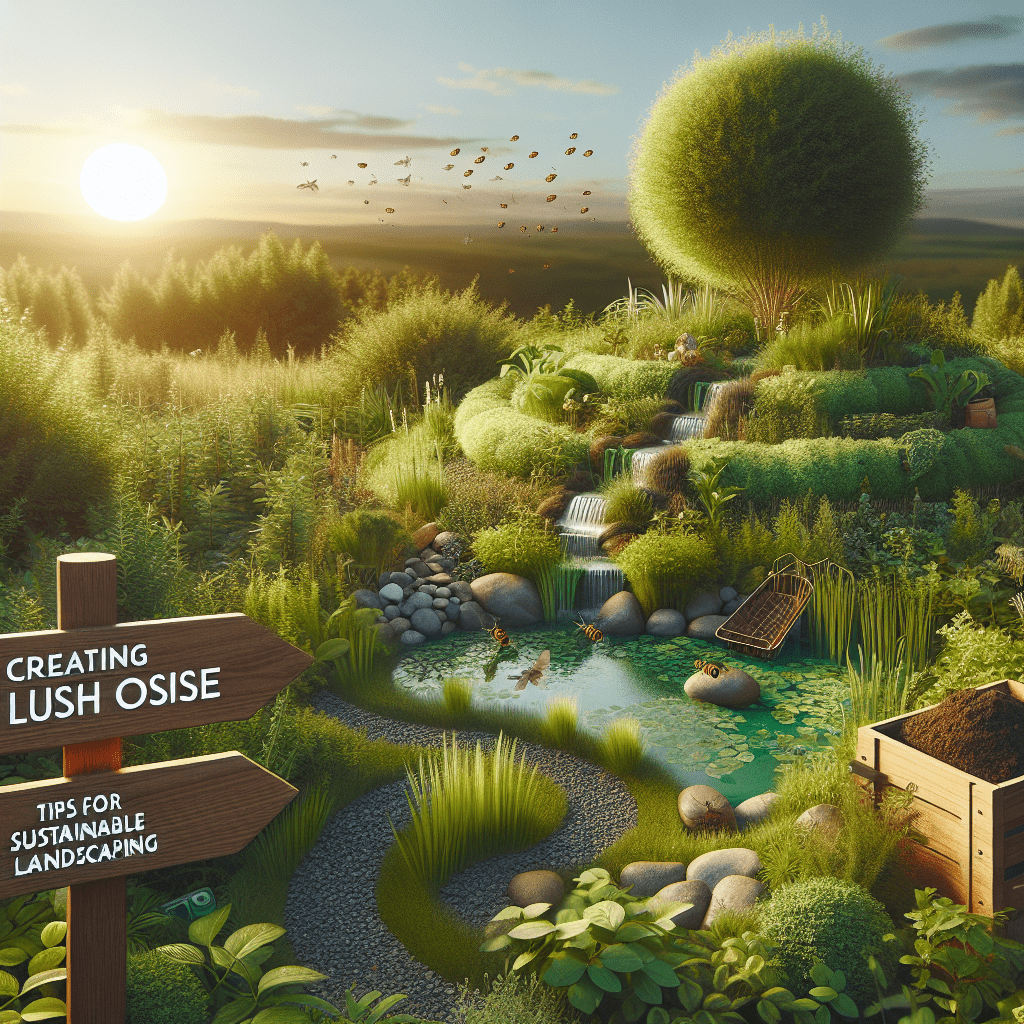Creating a Lush Oasis: Tips for Sustainable Landscaping
In today’s world, it is more important than ever to create sustainable and eco-friendly landscapes. Not only does this help to protect the environment, but it also ensures that your outdoor space remains beautiful and healthy for years to come. With the right techniques and tips, you can create a lush oasis right in your own backyard. Here are some tips for sustainable landscaping:
1. Choose Native Plants
One of the best ways to create a sustainable landscape is by choosing native plants. Native plants are adapted to the local climate and soil conditions, which means they require less water, fertilizer, and maintenance. They also provide important food and habitat for local wildlife, helping to support the ecosystem.
2. Use Water Wisely
Water is a precious resource, so it is important to use it wisely in your landscape. Consider installing a rain barrel to collect rainwater for watering your plants. You can also use drip irrigation systems to deliver water directly to the roots of your plants, reducing water waste.
3. Mulch, Mulch, Mulch
Mulch is a gardener’s best friend when it comes to sustainable landscaping. It helps to retain moisture in the soil, suppress weeds, and improve soil health. Choose organic mulches like wood chips or straw, which break down over time and add nutrients to the soil.
4. Compost Your Kitchen Scraps
Instead of throwing your kitchen scraps in the trash, consider composting them to create nutrient-rich soil for your garden. Composting not only reduces waste but also improves soil structure and fertility, making your plants healthier and more resilient.
5. Attract Beneficial Insects
Encourage beneficial insects like ladybugs, bees, and butterflies to take up residence in your garden by planting native flowers and providing shelter. These insects help to pollinate plants and control pests naturally, reducing the need for harmful chemicals.
6. Choose Sustainable Materials
When designing your landscape, opt for sustainable materials like reclaimed wood, recycled plastic, and natural stone. These materials are not only eco-friendly but also add a unique and rustic touch to your outdoor space.
7. Practice Integrated Pest Management
Instead of reaching for chemical pesticides at the first sign of a pest problem, practice integrated pest management (IPM) techniques. This involves using a combination of biological controls, cultural practices, and least-toxic pesticides to manage pests effectively while minimizing harm to the environment.
Conclusion
Creating a lush oasis through sustainable landscaping is not only good for the environment but also for your own well-being. By following these tips and techniques, you can create a beautiful and thriving outdoor space that is eco-friendly and low-maintenance. By choosing native plants, using water wisely, mulching, composting, attracting beneficial insects, choosing sustainable materials, and practicing integrated pest management, you can create a landscape that is both sustainable and stunning.
FAQs
Q: What are the benefits of sustainable landscaping?
A: Sustainable landscaping helps to conserve water, reduce waste, support local wildlife, and create a healthier and more resilient outdoor space.
Q: How can I attract beneficial insects to my garden?
A: You can attract beneficial insects by planting native flowers, providing shelter like bee houses, and avoiding the use of harmful pesticides.
Q: What is integrated pest management?
A: Integrated pest management is a holistic approach to pest control that involves using a combination of methods to manage pests while minimizing environmental impact.
Tip:
Remember to regularly monitor your landscape for any signs of pests or issues and address them promptly using sustainable and eco-friendly methods. By staying vigilant and proactive, you can maintain a healthy and thriving outdoor space for years to come.
#Creating #Lush #Oasis #Tips #Sustainable #Landscaping
